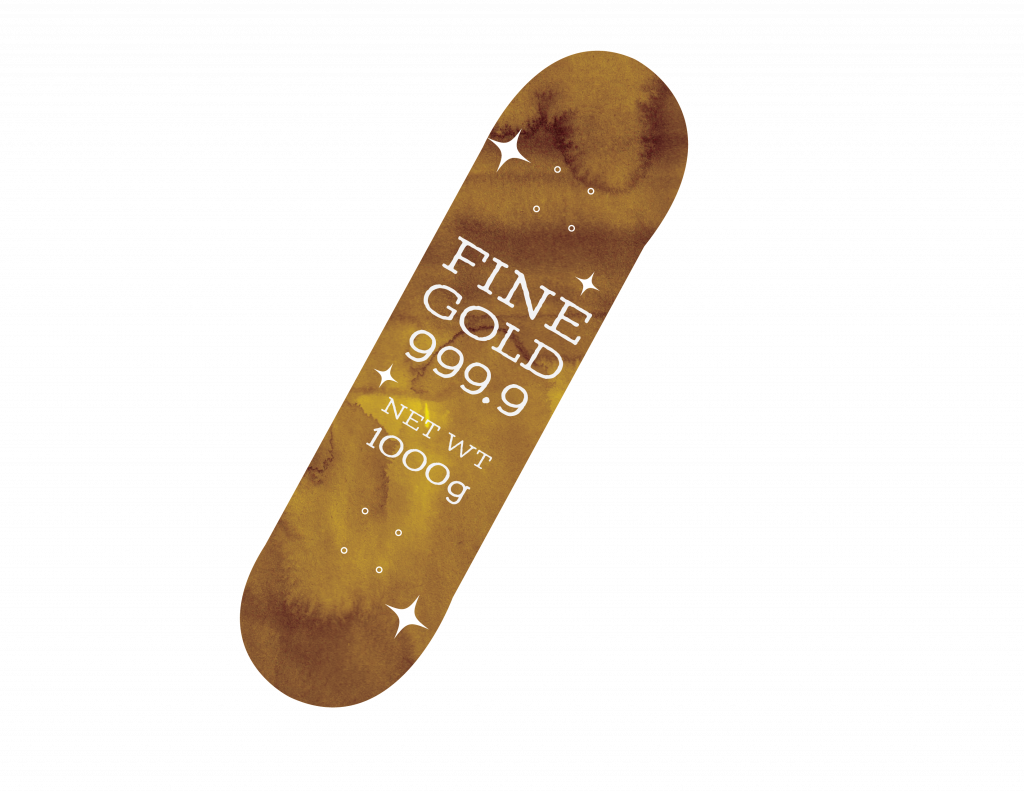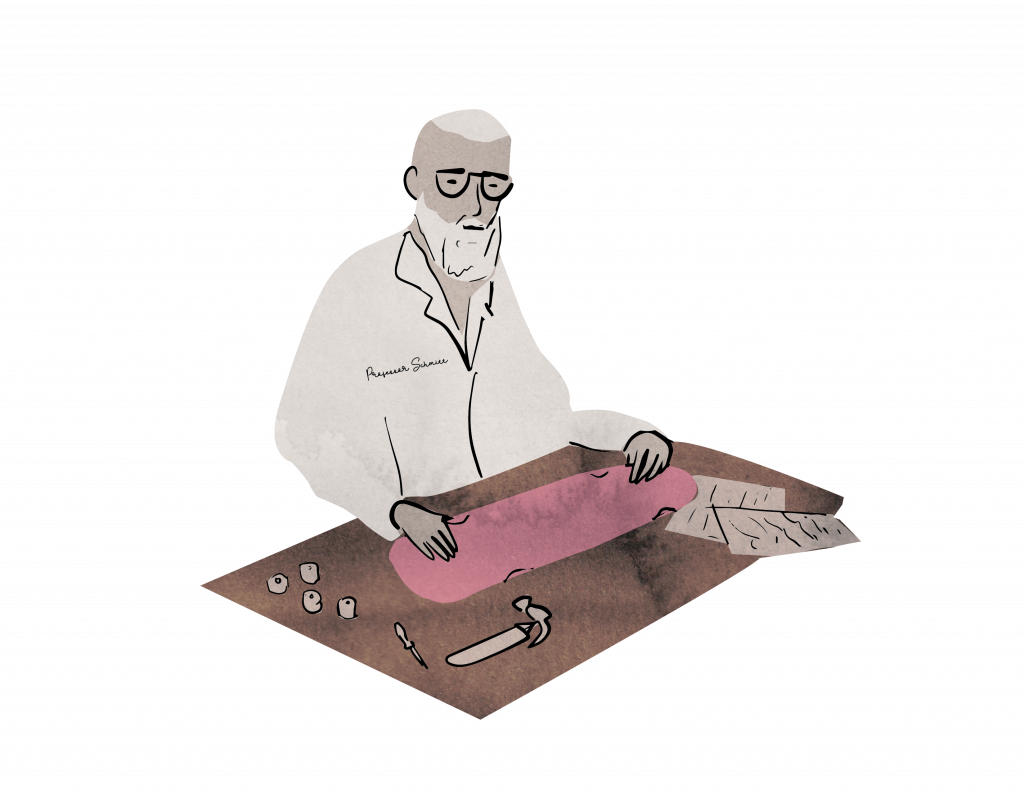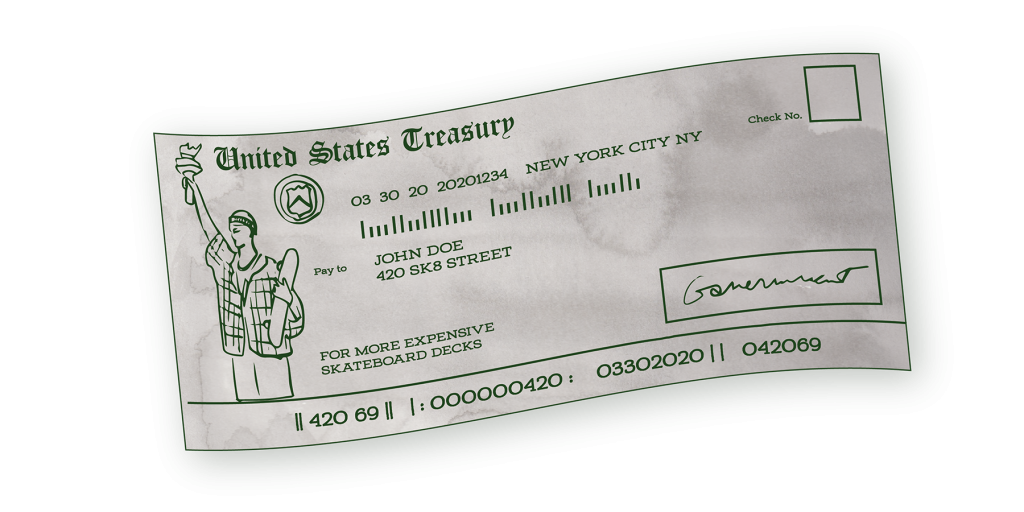The most stable part of skating used to be the price of a skateboard.
Whatever the brand, whatever the graphic, in America, a pro board cost about $55. But unless you get skateboards for free, you’ve probably noticed that, lately, you’ve been paying more for them.
Today, the decks on the wall at almost any shop sell for anywhere from $60 to $85, leaving skaters to wonder how the cost of a skateboard suddenly went up.
“That two-year growth is pretty crazy,” says Dave Waite, the buyer for 35th Ave., a shop outside of Seattle. “I think for some brands, and some distributions, we almost came up with a 20% price increase.”
PRICE ORIGINS
Paul Schmitt, the founder of PS Stix, traces the price of skateboards to the early ’80s. After years of experimenting with board constructions, the industry had settled on plywood. While manufacturers refined the process, the product, at its most basic, went largely unchanged throughout the decade. “So prices were pretty consistent in the ’80s,” Schmitt says, with boards hovering around $45.
Schmitt says it was Steve Rocco who first pushed the pricing threshold via World Industries and its umbrella of brands. “Rocco basically charged more money for stuff to pay for the marketing that he was doing and to pay bigger rider royalties,” Schmitt says. That translated $2 more per board for pros, double what riders for other companies earned. While that was happening, Santa Cruz introduced Ever-Slick boards, and within months, basically every company had its own version of the gimmicky plastic bottom, upping the price of boards by a few dollars.

Prices then plateaued for most of the ’90s, even as the cost of making and shipping skateboards went up. By the early 2000s, companies were increasingly moving toward Chinese manufacturing and heat-transfer graphics in lieu of more costly screen-printing. But lower manufacturing costs didn’t lead to cheaper prices at your local shop. Companies, Schmitt says, “just had a better margin now, or had a margin they could survive on.”
PANDEMIC
After more than 30 years of mostly static prices, the cost of a deck began to creep upward before the pandemic, as some in the industry suggested it should. But it was COVID-19 that hiked demand for skateboards and challenged the supply chains that carried them to shops, triggering what Schmitt initially saw as a healthy price adjustment. “Basically, COVID almost gave permission for a normal cycle to happen. And then you saw some brands really jump on it and raise their retail price.”
Raj Mehra watched these shifts play out from Canada. His distribution house, Mehrathon Trading, carries companies including Baker, Primitive, WKND, and April. The price points Baker suggests—$71 for boards under 8.25, inches, $73 for boards over 8.3 (all prices in American dollars)—reflect its operating costs, he says. “The reason why people want Baker is because of all the marketing efforts they make. Well, there’s a cost to that,” and other legacy brands may not be able to make the same investment.
But who was first to push prices northward?
THE TURNING POINT
Some in the industry point to Fucking Awesome as the catalyst. Jason Dill and Anthony Van Engelen’s company was part of the initial wave of boutique brands to emerge in the early ’10s, drawing comparisons to World Industries through its team and ethos. Its products stood out instantly. “It kind of was the first brand that was, like, a premium brand and their boards looked a little different,” Waite says. “And I almost feel like their prices on their website seemed to go up, and we all kind of followed suit, the whole industry.”
Schmitt manufactured Fucking Awesome’s boards from the company’s inception until 2019. He remembers the requests for the embossed and foil-wrap graphics that quickly became its trademark. “Dill loved to challenge the norm, right?” he says. “Creatively, he wasn’t gonna be constrained—‘I’m not gonna be told that it costs too much money with my vision to come out.” Schmitt no longer makes FA and Hockey boards, but a Dill portrait model with a lenticular graphic and embossing currently sells for $90 on the FA site. Other models sell for $70.

That sort of tiered price structure mirrors the model that reshaped sneakers. A Team Jordan shoe might cost the same as a Jordan 4 retro to produce. It may also have the same Jumpman logo on it, and it could be an equally good basketball shoe. But without whatever makes the Jordan 4 special—exclusivity, nostalgia—it sells for less. Skate companies might see boards similarly now.
“It’s like that shoe collector culture, right?” Schmitt says. “But it permeates across all kinds of things. It permeates across decks, and especially releases for old pros and historical things. There’s a certain person in culture that’s like, ‘Oh, can I get it now, before I can’t get it?’ And the reality is, when you ride an eight-and-a-quarter popsicle, and you’re riding it anyways, does it really matter that much?”
To a handful of skaters, yes. “They got a board that’s expensive,” and they want to show it off, Mehra says. But kids who skate every day and go through boards regularly will still choose local brands or more affordable options, he says.
Waite has seen exactly that at 35th Ave. “People just stopped buying FA and Hockey boards when that price went over $70,” he says. “It was just too much.” As prices rose, pandemic-era stimulus checks were also part of the equation. “Once those went away, it was just back to 35th boards or shopping the sale bin—that kind of stuff.” An East Coast shop owner contacted for this story said he keeps his prices low because kids in his area shouldn’t have to pay $70 for a board.
A large part of the industry seemingly feels the same. Bod Boyle, president of Sidewalk Distribution, says that the skaters behind small, independent brands can justify higher prices because the businesses themselves are typically run by one or two people responsible for everything from design to shipping. But he also thinks a price point between $60 and $70 is ideal for skating as a whole. “We want to keep skateboarding reasonably cheap and affordable for everybody.”
Still, there are small board brands that maintain lower pricing. Studio, a Canadian company, is one of them. In Canada, where decks can sell for upwards of $115, Studio boards go for $85. And in the U.S., their suggested retail price is $65. “I just try to be competitive with the other brands,” says Jai Ball, who’s run Studio for more than 10 years. He acknowledges, though, that companies like his will have to increase their margins, and says that the price of a Studio board in Canada will “probably be $90 next year.”

LOOKING FOWARD
The irony in all of this is that, as prices balloon in certain corners of the industry, some companies are selling boards at half price, desperate to clear their warehouses of old boards they ordered during the pandemic. So while you can buy a board for $80, you can just as easily find one for $40. The surge in demand companies saw when COVID-19 hit, coupled with delayed production and shipping schedules, amounted to what Boyle calls “a perfect storm of overstock.” Now, companies, distributors, and shops are asking the same question as Waite: “How is that gonna balance?”
The other big question is when, if ever, boards will hit a price ceiling.
“We felt like the ceiling was where we were at,” Mehra says. But boards continue to sell, “and I think some people have gotten used to this price.”
Waite, meanwhile, believes that pockets of skaters will pay more for reissues and newer technologies, like Powell Peralta’s Flight Decks. But for most, he says, the threshold is $65. And few see a higher price point as a mark of a first-tier brand.
“I mean, skateboarders will decide that by what’s under their feet, right?” Boyle says. “If they like the way it feels, then it’s perceived in a higher category than something that feels shit under their feet.”
Words by: Lucas Wisenthal
Illustrations by: Aubrey Fisch
Share this with a professor on Facebook
Report this as too expensive on Instagram and Twitter
If you like fun and intelligent skateboarding related articles, be sure to visit and bookmark: Jenkem Mag
In the above article, Professor Schmitt of PS Stix is quoted and also happens to be a BRA Supporting Vendor Partner. Please read on to learn about PS Stix and the special offer that the Professor is willing to extend to BRA Distinguished Retail Members:
PS Stix is a Skateboard manufacturing company, based out of Costa Mesa, CA for over 35 years and operating a wholly owned factory in Tijuana, México for over 15 years. Professor Schmitt’s remarkable shop-branded board program was created to offer a selection of Premium Boards from their new Full & Standard Shapes Catalog, which dimensions are based on an overview of top selling deck shapes in current market.
Special Offer for BRA Distinguished Retail Members
BRA Distinguished Retail Members will receive 5 free boards with the first order (new lower minimum) including one with the 20th Anniversary BRA DRM image to hang in your shop along with 4 of your new logo boards for your team to promote and shred.

If you are not yet a BRA Retail Member, you can easily opt in to either Regular (no cost) or Distinguished ($100/yr.) Membership via this super simple join form Your info will never be shared with anyone without your direct permission.

